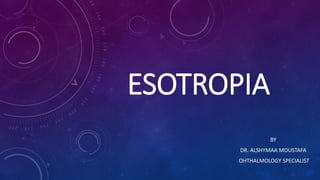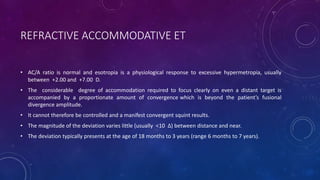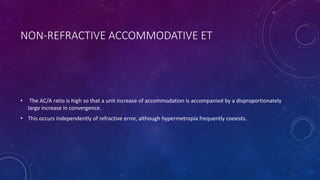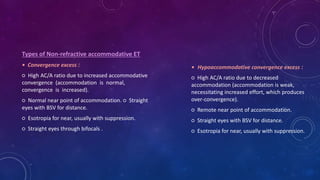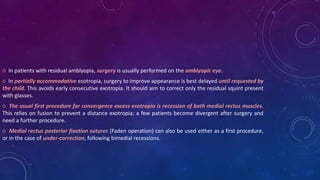This document provides an overview of esotropia, or convergent strabismus, including its classification and types. It discusses accommodative esotropia in more detail. Accommodative esotropia can be refractive, caused by hyperopia, or non-refractive, caused by a high AC/A ratio. Treatment involves correcting refractive errors with glasses and potentially bifocals. Surgery such as medial rectus recession may be considered if the deviation is not fully corrected with optical correction alone. The document outlines different types of accommodative esotropia and their typical treatments.
